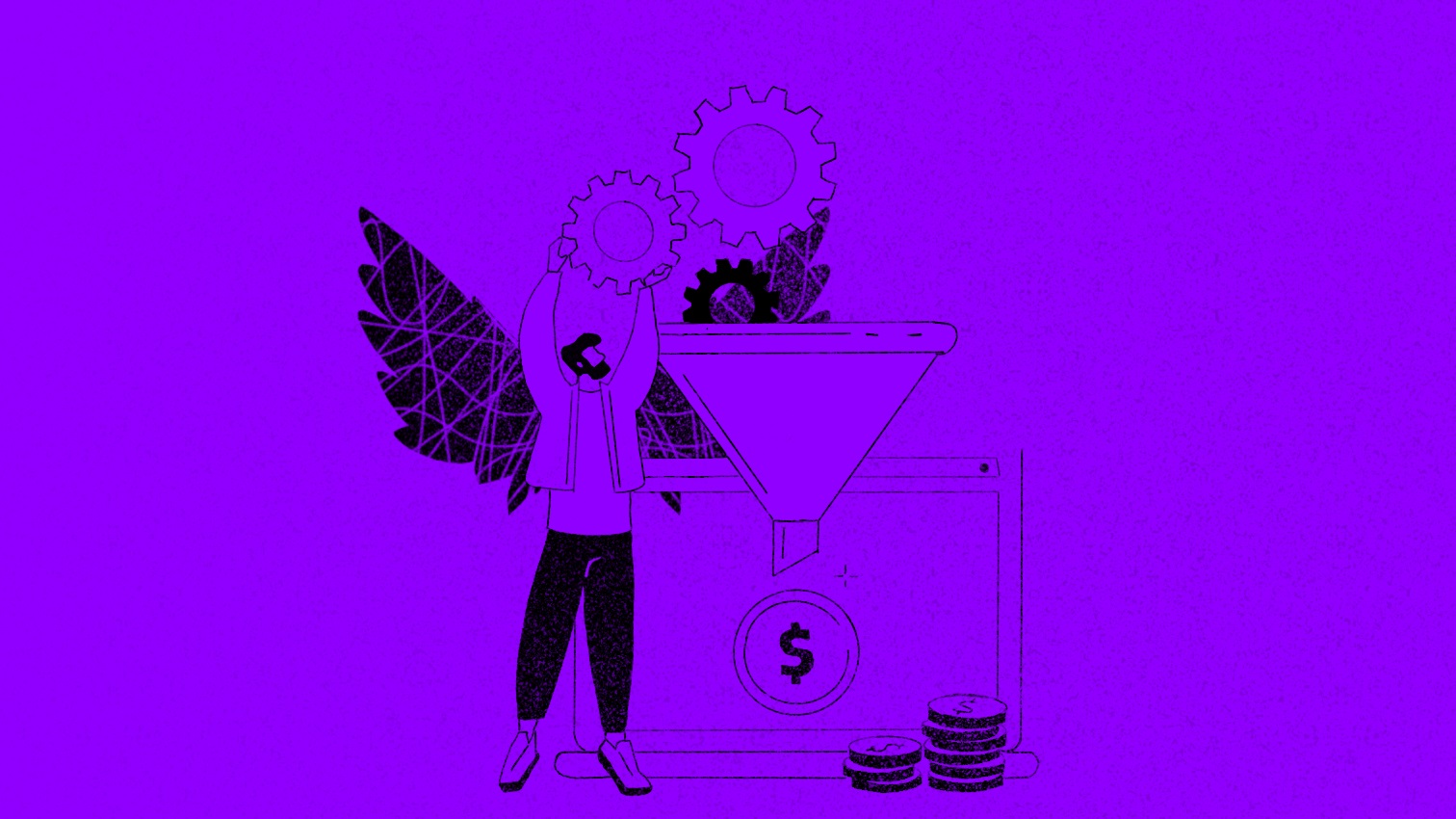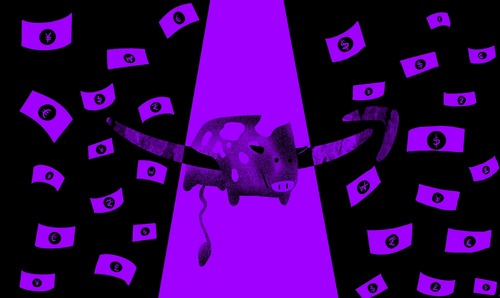Building a startup is HARD! It's like running an obstacle course in the dark with nothing but a small flashlight.
Paras Chopra went through a similar route while building Wingify.
- With ZERO dollars in funding,
- 3 failed startups
- and, 1st version of Wingify in the trash,
Paras was almost shooting in dark.
But, with his ability to course-correct and his focus on the basics, Paras was able to grow Wingify to a revenue of ~INR 155 Cr and profits of INR 50+ Cr in 12 years, all with ZERO VC funding!
So, let's buildd your next startup by learning valuable lessons from Wingify's journey.
It all started with the coding bug
When Paras was a little kid, his dad bought him his first computer. But, unlike other kids, who went straight to playing PC games, Paras got into coding.
By the time he was in 8th grade, Paras started building simple projects. And, when his father insisted, he published these projects on the web. He even had a small donation button and was making INR 5-6K per month. So, from a very young age, Paras had an entrepreneurial/techie streak!
So, when it was time for him to choose his major, it was a no-brainer that he would go for computer engineering. But, he did a 180 and decided to study biotechnology instead. Now, as a biotech engineering student, Paras was still building startups and putting them on the web.
Here's how it went:
- He would come up with a cool idea,
- Spend sleepless nights, locked in his room building it
- Would publish the website on the internet
- And, then he'd wait, and wait some more!
The waiting game was frustrating. On the one hand, where Paras was expecting to go VIRAL the day after launch, the dead silence was a terrible reality check. He had to do something more!
Lesson ➝ "Virality" is NOT a growth strategy, it is a prayer. Don't bank your startup's success on it.
Discovering the magic pill called Marketing!
The failure of 3 startups (more like college projects) made Paras realize that people just won't miraculously discover his startup. He will need to start taking marketing more seriously.
So, he started studying marketing.
Now, being a coding geek, what fascinated Paras was the technical, data analytics side of marketing. The process where marketers would test different versions of their product to see what positively impacts their conversions.
This is basically called A/B testing, where you test 2 versions of a product. (I'll explain this in detail in the next section).
Although Paras found a new interest, he was not keen on jumping into another startup just yet. Once he graduated, he took a tech job and worked there for 2 years.
Version ONE of Wingify!
After a year of working full-time, in 2009, Paras knew it was time to give this startup thing another go.
But, he didn't quit his job. Instead, he started working on Wingify part-time in the evenings after work and over the weekends. The goal was to first validate the idea and make sure he can actually make money from it before he quits his stable job.
He was coding for 8 months straight with barely 5-6 hours of sleep, after which the first version was ready.
Paras being a massive Paul Graham and Y Combinator fan, turned to the Hacker News community to get feedback for his product. But, the response pretty much broke his heart.
Why? Well, let me explain.
Paras knew he wanted to buildd an optimization software for marketers. But, the version 1 he created was just a bunch of different features dumped on the screen. Users found it extremely confusing and they complained that they don't exactly understand what the product does.
Although this was painful, he tossed the product in the trash and instead decided to focus on just 1 feature — A/B testing!
For any founder, their startup is precious to them. But, to truly succeed, they have to, eventually, put their startup out in the world and share it with actual users. Most times, you will face rejection, but you will always learn something from that experience.
After all, your ability to buildd a successful startup depends on your courage to fail publicly.
So, what is Wingify?
Paras set on to buildd a very simple A/B testing tool called VWO — Visual Website Optimizer. But, this time he wanted to do it quickly!
He tossed out concerns over making things pretty or adding an attractive logo (Funny Fact: Wingify didn't have a logo for 2 years 😂). He just picked a simple theme from theme forest and created a drag-and-drop visual workspace where users can A/B test different versions of their websites.
We can learn a couple of things here:
- First, make things work ⇒ Then, make it fast ⇒ And finally, make it beautiful
- Keep shipping ⇒ Perfect is the enemy of good.
- Don't try to solve for all problems at once. Figure the most critical ones & solve for them first. Iterate and solve for the rest in later versions.
So here's how it would work:
- Suppose you want to test to see what colour of a "subscribe" button on your landing page will result in more people clicking on that button.
- You decide to go with 2 versions — a "red" and "blue" coloured button.
- Now, Wingify splits your traffic into 2 segments, where the "red" button is visible to the first segment while the "blue" button is visible to the other segment.
- You can now see, which colour results in more clicks. Based on this experiment, you'll be able to modify your landing page.
So, when did things take off?
It took over a month to create this A/B testing prototype. Paras put out the free exclusive beta version for his users. But, he made sure only selected people who actually needed the product got access.
The goal here was to rapidly iterate with the help of user feedback. And, he did just that. He constantly asked his users "What was wrong?", "How can we improve?" and worked on their direct feedback.
After a while, the product morphed into a version that solved all user problems, very different from what Paras had envisioned initially.
Lesson ➝ When building a product, always think of building an MVP first. Launch a version of the product, get feedback, iterate & build on top of it.
Within 5 months after the Beta release, Wingify had 1000 free users! So, it was time to roll out the paid version.
Paras quit his job and set a target of earning at least INR 50K in the first month to sustain himself. But, as soon as he released the product, he immediately got 10 paying users.
In the first month itself, he made $4000 dollars, i.e. 6x of the target!
Journey to 20M in revenue!
The initial $4000 dollars per month kept doubling over the years. And, in just 18 months, Wingify made its first $1M!
What's funny is that Paras managed the whole thing alone till 2011, when his cofounder Sparsh joined him. They only started working in a proper office setting after they hired their first employee.
Today, Wingify has over
- 250 Members
- a revenue of INR 154.7 Cr
- makes a profit of INR 51.5 Cr
- and, grows at 28% year over year
- all, with ZERO funding, completely bootstrapped!
The massive team is a far cry from the early days when Paras alone was juggling multiple tasks like coding, marketing, sales, customer relations, product demos and more!
A typical generalist/jack of all trades, Paras took up different roles early on because he knew that all these areas had to the core competencies of Wingify!
In fact, it's required for every member in Wingify, regardless of their expertise, to contribute to customer support, so that they all align towards the problem they are solving.
Lesson➝ Never outsource anything that should be a core competency of your startup.
Of course, there are many more milestones for Wingify to achieve. But, Paras has already built a successful business, on his own terms. That's a true startup success story!








